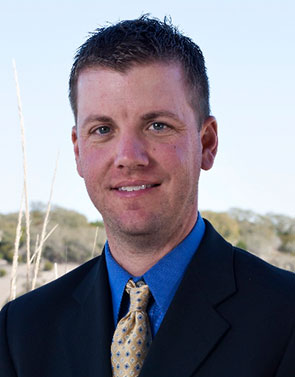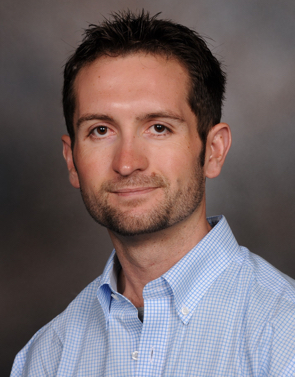Traditional chloride ice-melt compounds often do not meet performance expectations and are detrimental to plants, watersheds and potentially lethal to pets and humans if ingested. Entry® was created in recognition of the need for a product that would be better in performance and lower in harmful impacts. It is a chloride-free product, designed to melt ice faster than its chloride competitors and prevent refreeze, therefore decreasing slip and fall risks while also eliminating tracking into buildings.
Maximizing Capital At Your Golf Operation
SynaTek Solutions examines how growing maintenance costs are impacting the health of the game and explore technologies and strategies to help course operators better maximize their limited budgets. From tracking labor to improving water quality, SynaTek Solutions shows you ways to identify operating efficiencies at your course.
Five Questions On taskTracker Labor Management Software With Mark Semm.

Responsible for a crew of 24 who keep the 18-hole private club playable year-round for approximately 450 golf-playing members. His operation began using taskTracker in January, 2017.
As director of agronomy for Cordillera Ranch Golf Club in Boerne, Texas, Mark Semm has responsibility for a crew of 24 who keep the 18-hole private club playable year-round for approximately 450 golf-playing members. When Mark joined the operation eight years ago, the course was logging about 13,000 rounds per year. Today they are at 23,000. His operation began using taskTracker in January, 2017.
Were you on the search for something like taskTracker?
Like most operations we had our system. Ours was an Excel sheet we printed out, added notes, then wrote that up on a white board. It was OK, it worked. But I was seeing chat online and hearing about taskTracker from buddies. I went to visit a friend in Austin who was using it and it was pretty clear that it was a game changer for him. The cost wasn’t prohibitive so we felt like we could give it a try for a year and if it turned out it wasn’t for us it wouldn’t have been like we had dropped a huge sum like you do with some hardware or other software systems. We learned pretty fast that converting to taskTracker was going to be a no brainer for us.
How was the learning curve?
I’m old enough to remember all the old processes and young enough that I am not daunted by electronic tech. Now with some of this new technology I like to take a wait and see. Let others be the guinea pig. But with taskTracker, like I said, the investment wasn’t prohibitive so I felt as though we could bring it in without much concern. Also there was so much positive buzz I was picking up online in the circles I follow. The other key thing about bringing in new technology, I think it’s important to not overwhelm your staff by trying to flip all the switches. Turn on a few of the features and get comfortable with them. And when you’re comfortable, add more.
How are you using the software?
I’m looking at tomorrow’s schedule the afternoon before.  One of the assistants will work up tomorrow’s schedule so that when you come in first thing in the morning everything is up on the screen. We have three big screen monitors in the various buildings throughout the property so all teams can see. Guys get checked in as they come in. We make adjustments on the spot if someone is out sick, for instance. Or we’ve had a weather change or some other event that forces us to adjust. Like just last week we had a cold front blow through here and it was great to be able to group message using my phone from home to let the guys know they don’t need to come in. The old way, using the phone tree, there would have been multiple missed messages. Guys show up, get mad that they didn’t get a call or missed it and you have to manage all of that. What would have taken me an hour or more was about ten seconds with taskTracker.
One of the assistants will work up tomorrow’s schedule so that when you come in first thing in the morning everything is up on the screen. We have three big screen monitors in the various buildings throughout the property so all teams can see. Guys get checked in as they come in. We make adjustments on the spot if someone is out sick, for instance. Or we’ve had a weather change or some other event that forces us to adjust. Like just last week we had a cold front blow through here and it was great to be able to group message using my phone from home to let the guys know they don’t need to come in. The old way, using the phone tree, there would have been multiple missed messages. Guys show up, get mad that they didn’t get a call or missed it and you have to manage all of that. What would have taken me an hour or more was about ten seconds with taskTracker.
As the day progresses we tick off completed tasks, continue making adjustments as needed and all the boards across the operation update in real time. And the white board that would have been a mess with erasures and added sticky notes is instead a clean presentation on a big monitor. And all the information is saved so I can refer to it for planning or share it with my GM. I keep it bookmarked whenever I go into a meeting in case I need to refer to it as support.
Can you quantify the return?
The return on the investment for us has shown up in a number of ways. Just in the time it has saved in not writing all the stuff down on white boards, chalk boards, post-it notes and transferring from one to another has more than covered the cost of the software. But here’s another example: Every year we do a capital project and last year it was a sod project not for the golf operation but for the greater property. There’s more time than just what my crew spends to lay the sod. We have weeks of work to nurture it. And that time is pulling away from tasks specific to the golf course. By tracking the watering, the caring for that sod we are able to put those capital dollars back into the golf course budget and that right there paid for the software three times over.

Of course there’s greatly improved efficiency top to bottom. And I don’t know if other users notice this, but it never fails in our world on weekends when our crews mow and we have to be quick on and off the course, the guys (crew) get it done in four hours. During the week we see the same chores take five or six. So we put those actual hours up on the screen for the guys to see and they know that we know what it really takes. It can be a motivator.
Is this software you see working well for any golf operation?
Yes, even a smaller operation would benefit from taskTracker. At its most basic, it just keeps you organized. When I first got into this business I did an internship at Augusta National and the super there gave us all day planners. Remember those? The ringed binder with calendars and spaces for notes? Think of this software as an electronic day planner that is virtually automatic in the way it kept you organized and functioning very efficiently. Of course the more you want it to do, the more it will do.
Transitioning To New Solutions — How One SynaTek Customer Approaches It.

Uses Xcaliber, one of our platform Calcium Enhancement products. Is on the Branch Creek Testing Facility.
Since the so-called Great Recession in 2008, headlines proclaiming the demise of golf have dominated. But lately, it seems, there is brightening on the horizon. A legion of young guns are pumping excitement into the pro game, as is the latest return of Tiger Woods. And statistically speaking, the game is in as good a place as it has been in years, with the future looking even more promising. According to the National Golf Foundation, 2.5 million golfers teed it up for the first time last year, beating the old record set in 2000 during the height of Tiger Woods’ popularity by 100,000 new golfers.
But hold on with all the sunshine and rainbows. A presentation at the 2017 Golf Industry Show by Golf Course Industry magazine Publisher Pat Jones reminded us that the industry is still losing 150 courses per year, and that trend will continue for at least another 10 years. Rounds have stayed consistent at 480MM/year, but revenue is down — meaning golfers are playing, but they are spending less and playing less expensive courses. All of which puts more stress on superintendents to do more with flat or shrinking budgets.
“We are getting more and more pressure to keep costs down and improve playing surfaces,” said Chris Reverie, superintendent at Allentown Municipal Golf Club.
“It’s about making better turf, but also keeping the budget sound. And that means sometimes you have to try new things and take some chances.”
Trying new things, though, comes with a catch: How do you go from a product you know to one with which you have no history? The new product could work just as well, cost less and result in fewer inputs. But what if it doesn’t and your turf suffers? You’ll hear it from your golfers and management, and you’ll feel it on the bottom line when rounds go down. For Reverie, it’s about tactically managing the transition.
Start with small steps.
“Superintendents have egos,” Reverie said. “We all want to be the guy who has found the newest, best thing, a way to do it better, more cost effectively.” That ego, he warned, can prompt you to bite off more than you should. “Definitely start with small steps. Maybe you start with one application and see how it works. Monitor it closely. If you’re happy with it, add it to the mix and expand the next season.”
Guard your backbone.
In the “generics versus brand names” discussion, Reverie feels strongly that you should protect you backbone. “We are protective of our high-value turf, which is the backbone of our course,” he said. “Greens first, tees second, fairways third, approaches and rough fourth. Say we’re talking fungicide, greens and tees get the brand name we know. Rough and maybe approaches will get a generic.” In this way, Reverie can test new products with the lowest risk.
Get the decision-makers tangibly involved, and communicate.
Whether you’re a municipal like Reverie’s Allentown Club, a daily fee or a private course, there are always people to answer to — owners, GMs, controllers, boards. Their level of sophistication about turf and the inputs that keep it healthy varies widely. On top of that, there is always resistance to change. “You walk into a meeting and try to explain what the product’s doing and why and there’s a good chance they don’t really understand or want to understand,” Reverie said. “But you have to break it down for them in a visual way. Bring them out on the course and say, ‘Look at how this looks now, compared to before.’ Give them something tangible. And make sure you communicate with all the tools at your disposal. I often bring in outside consultants so the board hears expertise beyond my own.”
At SynaTek Solutions, our expertise is always available. Shoot us an email to info@synateksolutions.com or call 888-408-5433.
